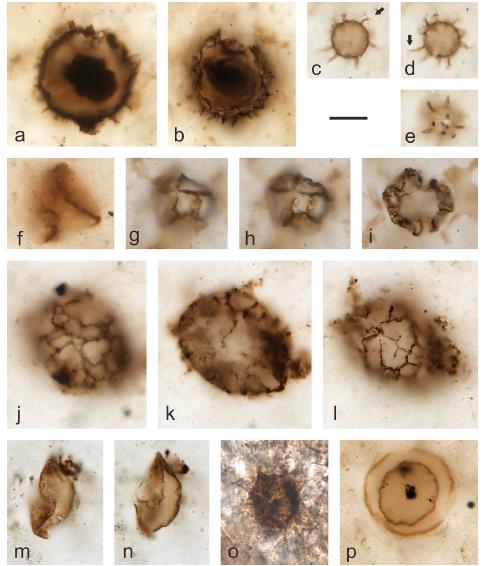During the Ordovician period, siliceous rocks were widely deposited in many parts of the world, including Kazakhstan and eastern Australia. Although the micropaleontology of Ordovician deep-sea cherts is relatively well documented, microfossil assemblages in Ordovician shallow-marine cherts are less well-known.
Recently, associate researchers MENG Fanwei and YAN Kui, and master student YUAN Xuejun, from Nanjing Institute of Geology and paleontology, Chinese Academy of Sciences (NIGPAS), in cooperation with senior engineers ZHANG Zhili and LI Huili, from Sinopec petroleum exploration and Development Research Institute, studied the drilled carbonate rock core of Yijianfang Formation in the Middle Ordovician of Well YJ-1 in the north of Tarim Basin, China, and found a large number of chert nodules in the carbonate rock. The related research results were published in the international SCI journal Carbonates and Evaporites.
Abundant fossil algal assemblages were found in the sections of chert nodules. It includes 11 genera of planktonic algae fossils (acritarch) and filamentous cyanobacteria, revealing the biological assemblage of Middle Ordovician chert facies. The Yijianfang Formation fossil assemblage indicates a deep offshore depositional environment. Sedimentological evidence also suggests that the limestone that hosts the chert interval was deposited in a low- to moderate-energy, restricted, inner carbonate platform. Cherts formed by silicification during late diagenesis.
Previously, Chinese Ordovician micro planktonic algae fossils (acritarch) basically came from shale immersion. This study is the first study of Ordovician chert facies fossils in China, which enriches the understanding of Ordovician biosphere. The acritarch fossil assemblage in chert can be compared with other regional assemblages in the world at the same time, and can be also used for outcrop and drilling core biostratigraphic correlation, which has important industrial significance.
This research is supported by the National Natural Science Foundation of China, the China-Israel cooperation Project of the National Natural Science Foundation of China, and the original innovation project of "from 0 to 1" of the basic frontier science research program of the Chinese Academy of Sciences.
Reference: Zhang, Zl., Meng, Fw., Zheng, Qf. et al. Microfossils from nodular cherts in the Middle Ordovician Yijianfang Formation carbonates (Well YJ1X), Tarim Basin, China. Carbonates Evaporites 36, 38 (2021). https://doi.org/10.1007/s13146-021-00689-7.

Figure 1. Fossil algae in nodule cherts of Yijianfang Formation in Middle Ordovician of Well YJ-1 in northern Tarim Basin, China
Contact:
LIU Yun, Propagandist
Email: yunliu@nigpas.ac.cn
Nanjing Institute of Geology and Palaeontology, Chinese Academy of Sciences
Nanjing, Jiangsu 210008, China
Download:
